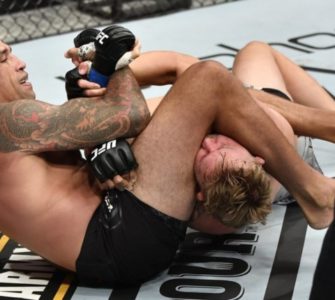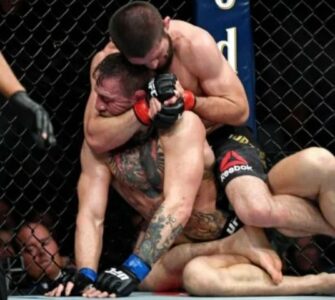Brazilian Jiu Jitsu and Judo practitioners typically won’t let even a major finger injury prevent them from training. Whether it’s gi or no-gi, BJJ and Judo mangle the fingers and their joints. Understanding common finger injuries and how they occur provides valuable insight on prevention and support post-injury. The following injuries below are the different categories of injuries most commonly suffered by BJJ/Judo practitioners and what causes them.
The BJJ and Judo fighter typically won’t compromise efficiency or mobility for the protection of a finger but these injuries can become quite severe. In today’s world, a martial artist who acquires a finger injury not only suffers time off of training but is also affected in numerous areas of life such as using a computer and other day-to-day tasks.
Today with the progress of wearable technology, Grappz™ finger support compression gloves, solve the problem that athletic tape could not. They offer finger protection without compromising mobility and they’re as efficient as wearing a rash-guard. Unlike tape, the 4-way stretch compression fabric has elasticity allowing your fingers to fully retract and extend while still tightly conjoining or ‘buddy taping’ those 2 fingers together as a splint.
View this post on Instagram
Grappz™ will not slip off in training or leave a sticky residue, yet they’re easy to put on so there’s no wasted time. You can wash them with your gi or rash guard and wear them for the next roll. Grappz™ can be used both preventively and post-injury as a brace/finger support but they’re not just for protection. They also create finger synergy, increasing your grip strength and providing all the added benefits of compression technology to the joints in your fingers, supporting the healing process. Below are the 5 most common finger injuries in BJJ and the long-term effects they cause to the fingers.
Injury: Fracture
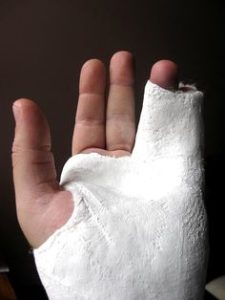
Effects: Bone
Description: Broken finger bone. The four front digits have three bones called the phalanges: proximal (closest) phalanx, middle phalanx, and distal (furthest) phalanx. In a fracture, the phalanx itself breaks. Fractures most likely also come with other injuries including tendon and ligament damage.
Causes: Crushing impact from explosive scrambles or movements. Finger caught in Gi and torqued to fracture. Direct impact to fingertip from another body part to breaking point.
Aftermath: Get to a doctor for realignment and possible further treatment then:
- Wear a finger splint (Complete immobilization of the whole finger)
Or
2.Tape fractured finger to adjacent finger (buddy taping) to provide splint like support but with some mobility.
Injury: Dislocation
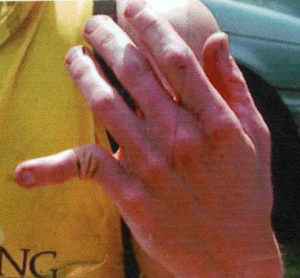
Effects: Joint
Description: A dislocation occurs when a bone is pushed/pulled out of alignment from its joints. Directional impact to the bone pushes the finger in a direction where it is not meant to bend.
Causes: Direct impact to a single finger, explosive collision onto a hard body part in scrambles, breaking a fall while outstretched, pushing/pulling a single finger in the wrong direction by opponent, getting your grips explosively broken off the Gi.
Aftermath: Joint must be reset. Swelling of the joint. Once the joint is dislocated it is susceptible to frequent dislocations moving forward. Physical therapy and/or stability exercises are required to retain mobility, stability and strength.
Injury: Sprain/Hyperextension
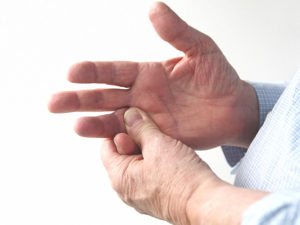
Effects: Ligament
Description: Sprains are the stretching and tearing of a ligament –tough bands of tissue that connect two bones together in joints. Sprains or hypertensions are a painful joint alignment injury that is similar but less severe than a dislocation. They are both caused when a joint is extended out of its normal alignment. Hyperextended fingers do not dislocate fully but can cause strain in ligaments and tendons.
Causes: Falling while outstretched, jammed fingers (directional impact at the tip), directional impact pushing finger against the joint
Aftermath: Rest and apply ice. Minimize use and movement during healing.
Injury: Jersey Finger
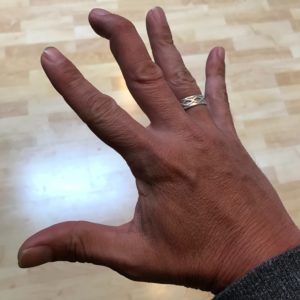
Effects: Tendon
Description: Inability to flex finger. Damaged tendon at the base of finger
Causes: Gripping and holding another athlete or another athlete’s clothing/Gi. Over use of grips getting caught in Gi.
Aftermath: Use ice, rest, and consult a specialist for further treatment or surgery.
http://www.sportsinjuryclinic.net/sport-injuries/wrist-pain/jersey-finger
Injury: Boutonnière Deformity
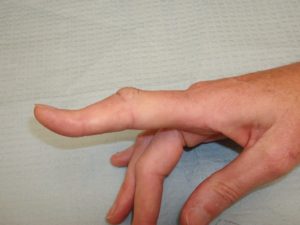
Effects: Knuckle joints, tendons
Description: Finger resembles an ocean wave. The first knuckle protrudes, the second knuckle flexes inwards, and last knuckle protrudes. Pain occurs in the middle knuckle and deformity is often distinctly visible. [See: Keenan Cornelius fingers]
Causes: Impact to the top of the finger (jams), gripping another athlete or another athlete’s clothing/Gi, consecutive sprains, grips getting caught in Gi.
Aftermath: Wearing a splint, surgery
https://orthoinfo.aaos.org/en/diseases–conditions/boutonniere-deformity/
LONG TERM EFFECTS OF SOME OR ALL OF THESE FINGER INJURIES:
Bursitis is a painful condition that affects the small, fluid-filled sacs (called bursae) that cushion the bones, tendons and muscles near your joints. Bursitis occurs when bursae become inflamed.
The symptoms of Bursitis of the fingers are: Achy or stiff fingers, Swelling, redness, sharp shooting joint pain and the sudden inability to move joints.
Treatment typically involves resting the affected joint and protecting it from further trauma. In most cases, bursitis pain goes away within a few weeks with proper treatment, but recurrent flare-ups of bursitis are common.
https://www.mayoclinic.org/diseases-conditions/bursitis/symptoms-causes/syc-20353242
Osteo-Arthritis is inflammation of one or more of your joints. It causes cartilage (the hard, slippery tissue that covers the ends of bones where they form a joint) to break down. It’s caused by wear-and-tear damage to your joint’s cartilage. Enough damage can result in bone grinding directly on bone. This wear and tear can occur over many years, or it can be hastened by a joint injury.
The main symptoms of arthritis are joint pain, stiffness, swelling, redness and decreased range of motion, which all typically worsen with age and trauma.
https://www.mayoclinic.org/diseases-conditions/osteoarthritis/symptoms-causes/syc-20351925



